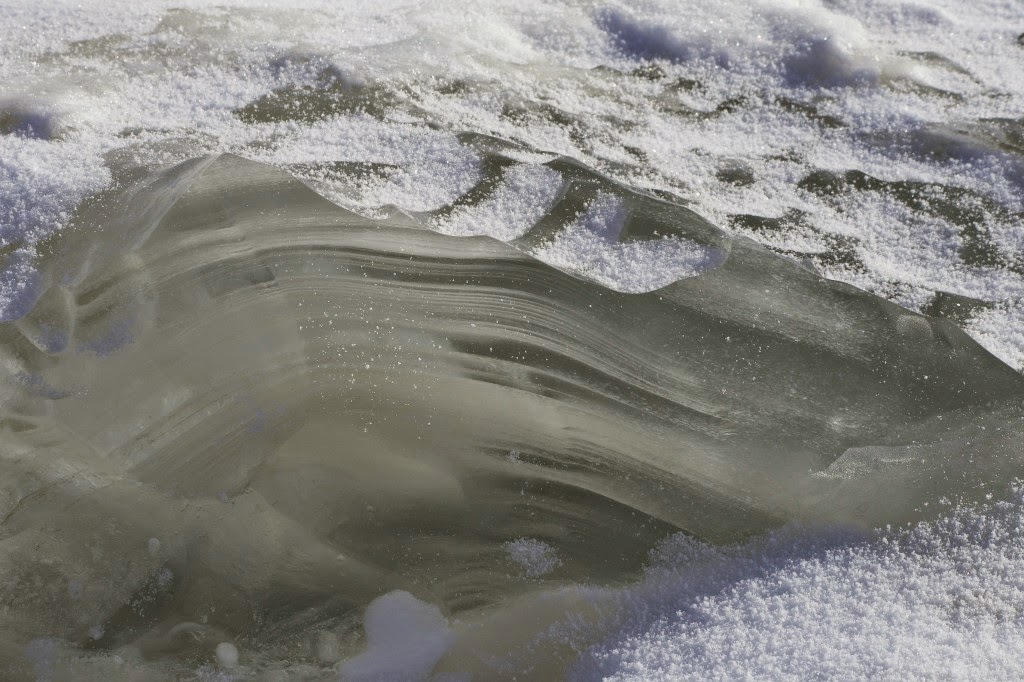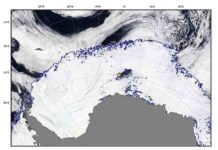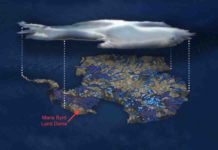
Australian scientists are hoping a rare sub-glacial water eruption near Australia’s Casey station, will reveal why meltwater is present, and the extent of a river and dam system flowing deep under the Law Dome ice cap.
In only the second reported incident of its type in Antarctica a Jökulhlaup, or sudden outburst of basal melt water from beneath the ice cap, erupted near Robinsons Ridge, 15 kilometres south of Casey.
Associate Professor Ian Goodwin from Macquarie University observed the first recorded Antarctic Jökulhlaup, also near Casey station, in 1985-86, and located a large subglacial lake near the ice margin.
The new eruption was first noticed by Casey expeditioners over the 2014 winter, who were puzzled by springs of flowing water erupting from the surface of the ice.
“The expeditioners saw the melt water rising to the surface and dispersing over the surrounding ice sheet, before refreezing,” Professor Goodwin said.
“The refrozen Jökulhlaup water is very prominent because of its striking olive-green colour, which contrasts sharply with the surrounding blue glacial ice and white snow.
“This is a very exciting and rare opportunity to find out more about the conditions under Law Dome from this sub-glacial water which is potentially tens of thousands of years old.”
Samples of the frozen Jökalhlaup water are currently being collected by scientists from the CSIRO and the Australian Nuclear Science and Technology Organisation.
The ice will then be analysed in new ice laboratory facilities at Macquarie University, Curtin University and the Antarctic Climate and Ecosystems CRC.
“There have been advances in technology and techniques since the last known eruption 30 years ago, which will allow us to measure the hydro chemistry in much more detail from these samples,” Professor Goodwin said.
“We will measure the major ionic chemistry and isotopes to find out how the bottom of the ice sheet is melted, how far the water has travelled, and an insight into the stability of the ice sheet.
“We are also attempting to estimate the age of the water,” he said.
“Additionally, if the researchers can get a sample close to the water when it’s erupting, they will take refrozen samples to measure the methane and greenhouse gas content in the sub glacial meltwater.”
Program leader with the Australian Antarctic Division, Dr Tas van Ommen, said previous aerial radar work through the ICECAP project will help the researchers pinpoint the origin of the water.
“The ICECAP work used ice-penetrating radar to map the conditions at the base of the ice sheet in East Antarctica, and this can help identify which areas are more likely to produce basal melting and water,” Dr van Ommen said.
“Putting the whole picture together, with data from ICECAP, deep ice core temperature measurements on Law Dome and samples from the Jökalhlaup, will help us understand the past and present behaviour of the ice cap, and how it might evolve in the future,” he said.
Previously, scientists thought the Law Dome ice cap was frozen to the bedrock. However, the outburst of the frozen spring in 1985 showed water is produced underneath some parts of the ice cap, at least episodically.
“Our observations of the Jökulhlaup confirmed Law Dome had high geo-thermal heat emanating from the Earth’s crust which was melting the bottom of the ice cap,” Professor Goodwin said.
“This water then flowed in river systems under the ice sheet out into the ocean, or in this case, where the rivers are dammed by frozen ice, the water flows up to the surface through weaknesses in the ice sheet,” he said.
The samples from the Jökalhlaup will be flown back to Hobart later this month and analysis of the ice is expected to take several months.
Note : The above story is based on materials provided by Macquarie University.









